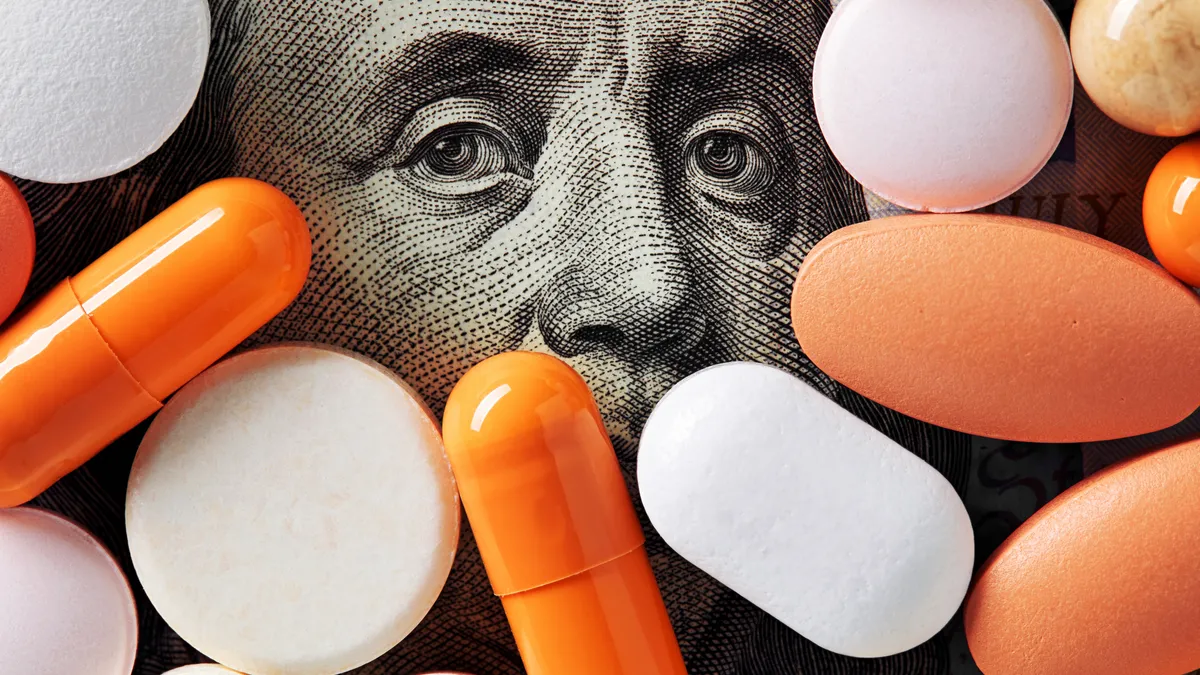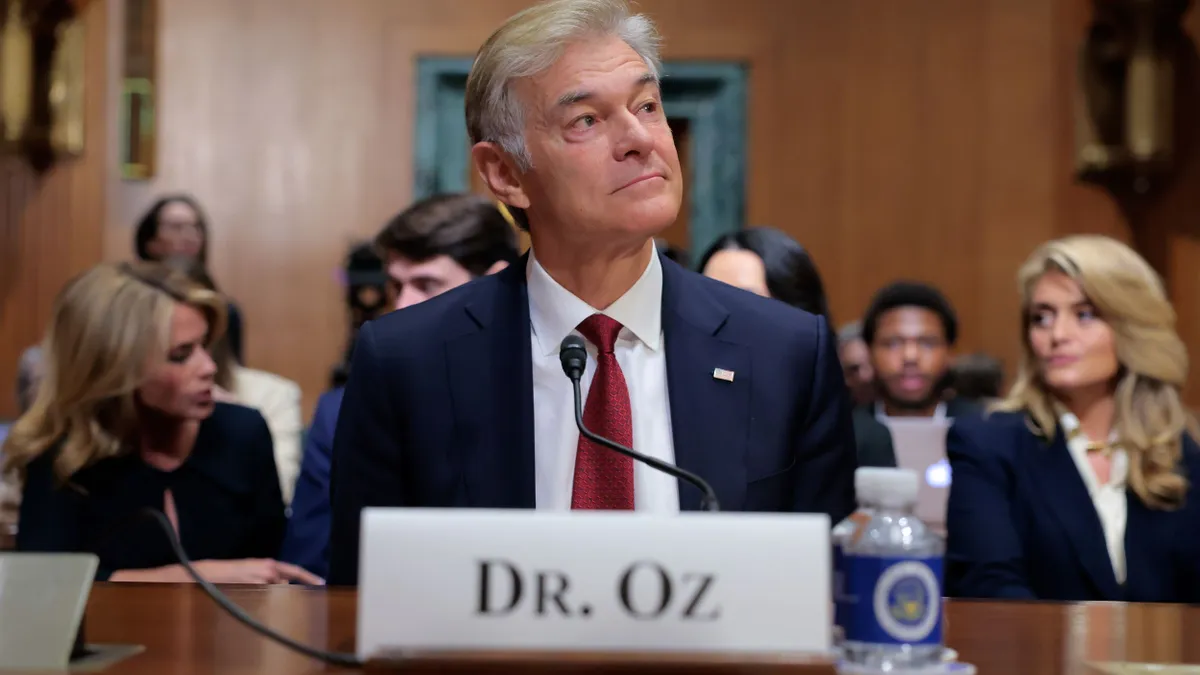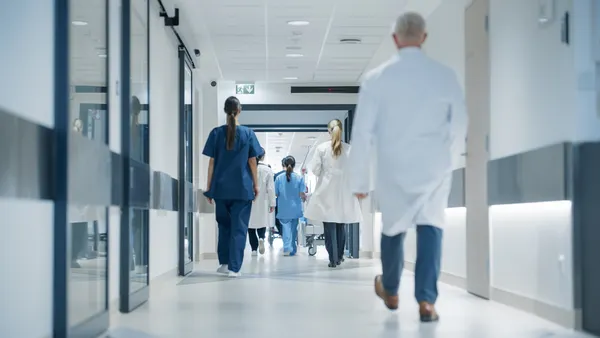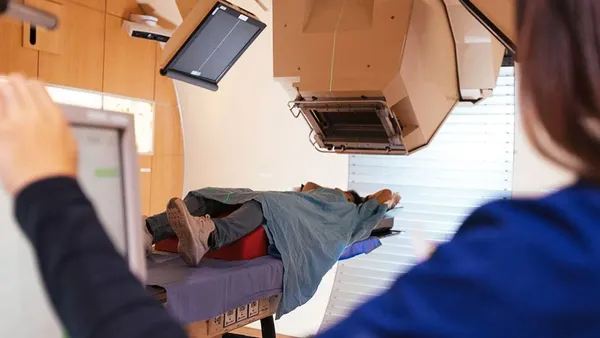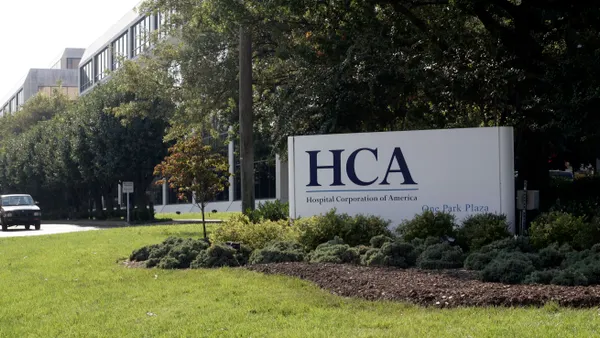Dive Brief:
- The 340B drug discount program incentivizes hospitals to purchase outpatient clinics and prescribe more and higher-cost drugs — behaviors that tend to increase costs for the federal government and commercial health plans, according to a new report from the nonpartisan Congressional Budget Office.
- Only one-third of the sharp growth in 340B spending since 2010 is due to rising drug costs and higher prescribing of more expensive drugs, the CBO estimates. Instead, the growth has mostly been fueled by hospitals acquiring off-site clinics and contracting with more independent pharmacies, along with more providers becoming eligible for 340B.
- Though the CBO stressed it doesn’t have enough data to quantify the influence of each factor individually, the agency believes that the biggest driver of snowballing 340B growth is probably hospital-clinic M&A.
Dive Insight:
The 340B program requires drugmakers to sell outpatient drugs to safety-net hospitals and clinics at a significant discount. It was created in the early 1990s to help the cash-strapped providers stretch their resources further and ensure vulnerable patients can access the medications they need.
But 340B has spiraled out of control, according to drugmakers, lawmakers and health policy experts critical of the program. The CBO’s report is the latest research suggesting 340B may have mutated beyond its original intent and become a source of snowballing costs for U.S. healthcare.
The scorekeeper found that healthcare facilities that contract with the government’s main 340B vendor spend $43.9 billion on 340B drugs in 2021, up from just $6.6 billion in 2010 — an almost sevenfold increase. The tally doesn’t include all 340B spending, but represents spending for about 90% of 340B facilities, according to the CBO.
That growth rate wildly outpaces broader spending increases during that time on prescription drugs, including higher cost treatments for conditions like cancer, the CBO found.
Instead, the agency estimates roughly two-thirds of increases in 340B spending are due to three major factors. For one, the Affordable Care Act passed in 2010 made more hospitals eligible for the program.
340B also incentivizes hospitals to buy more clinics. Since hospitals receive discounted prices for outpatient drugs distributed to patients who receive healthcare at any of their sites, having more sites equals more revenue in 340B savings.
Between 2013 and 2021, the number of off-site outpatient clinics participating in the 340B program increased from about 6,100 to 27,700, the CBO found. Over the same period, the share of hospitals with at least one off-site outpatient clinic jumped from 50% to 76%.
Finally, a 2010 guidance change freed up hospitals to contract with an unlimited number of pharmacies to dispense 340B drugs, allowing them to collect discounts on significantly more prescriptions.
The number of such contract pharmacy arrangements grew from about 2,000 in 2010 to nearly 130,000 in 2021, according to the CBO.
It’s not the first research suggesting the draw of increasing 340B revenue drives hospital-physician consolidation, or highlighting hospitals’ expanded use of contract pharmacies as a potential issue. Pharmaceutical companies in particular have turned to the courts in a bid to restrict how many pharmacies hospitals can have dispense 340B drugs, citing the potential for increased fraud and abuse.
And increased consolidation among hospitals and clinics has been shown to drive up costs for patients and their insurers, without a corresponding increase in quality or access. That’s one way that the 340B program could be increasing U.S. healthcare spending, the CBO said.
Others include incentivizing doctors to prescribe more drugs, including drugs that cost more; leading drugmakers to reduce or limit plan rebates for 340B drugs; and causing participating facilities to expand the services they provide, which could increase utilization, according to the agency.
“In many cases, the evidence about the behaviors is limited, and the magnitude of their effects is unknown,” the CBO wrote in its report. But overall, 340B “[encourages] behaviors that tend to increase federal spending because they lead to higher prices or an increased use of drugs,” it concluded.
CBO has not estimated how 340B legislation might alter federal spending. Lawmakers have highlighted issues with 340B in congressional hearings, including how 340B statute doesn’t put any parameters around what providers have to do with the savings or require them to report that information. However, bills introduced this year would mostly preserve the status quo in 340B or expand the program further.
The Trump administration has moved to reform the program, including by trialing allowing drugmakers to pay hospitals after-the-fact rebates instead of upfront discounts on 340B drugs and proposing moving 340B oversight under a different agency.
The moves have raised the hackles of hospital groups, which argue 340B is imperative to keep struggling safety-net providers afloat.
340 Health, a lobby representing providers in the program, did not respond to a request for comment on the CBO’s report.



